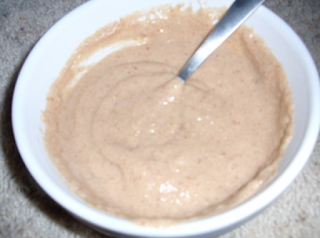How to store the food in the refrigerator in summer?
Due to busy work, sometimes the weekend to prepare for several days of food, so it is just how to save the dishes how to save the problem.
But on this issue in the online search for a lot of information, saying different.
Support just burn the hot dishes directly put the reasons for the refrigerator:
Hot dishes if the room temperature cooler, this process is conducive to a large number of bacteria breeding. And so cool and then put the refrigerator can not achieve the role of inhibition of bacterial proliferation.
Suggestion from FDA ( Refrigerator Thermometers: Cold Facts about Food Safety ):
Food should be put into the refrigerator as soon as possible (if it's too hot, cool it as soon as possible and then put it in the refrigerator, do not wait for its cooling down slowly).
"When it comes to protecting yourself and your family from foodborne illness, one of your most effective tools is the kitchen refrigerator. In fact, at room temperature, the numbers of bacteria that cause foodborne sickness can double every 20 minutes! Chilling foods to proper temperatures is one of the best ways to slow the growth of these bacteria.
To ensure that your refrigerator is doing its job, it’s important to keep its temperature at 40 °F or below; the freezer should be at 0 °F. Since few refrigerator controls show actual temperatures, using an inexpensive freestanding appliance thermometer will allow you to monitor the temperature and adjust the setting of the refrigerator and/or freezer if necessary. Buy one for the fridge, one for the freezer, and check them often."
FDA and Adoric blog also introduced the following ways to improve the safety of refrigerator storage of food:
1. Avoid excessive packaging of food in the refrigerator.
2. Install the food with a flat and shallow container, increasing the surface area to promote rapid cooling.
3. When the food is still hot, you can put the bowl in the cold water for cooling down and then put it in the refrigerator.
4. Always clean the refrigerator and avoid stacking food.
5. Put the water on the surface of the food before it is put into the fridge, especially the condensed water droplets on the surface of the frozen meat bought from the supermarket, which can effectively reduce the contamination of the refrigerator with Listeria monocytogenes.
6. Store food in a covered container or a sealed bag.
7. Separate the food from a large packaging into small packages. For example, a large piece of meat can be cut into a few pieces and then wrapped to put into the refrigerator.
But on this issue in the online search for a lot of information, saying different.
Support just burn the hot dishes directly put the reasons for the refrigerator:
Hot dishes if the room temperature cooler, this process is conducive to a large number of bacteria breeding. And so cool and then put the refrigerator can not achieve the role of inhibition of bacterial proliferation.
Suggestion from FDA ( Refrigerator Thermometers: Cold Facts about Food Safety ):
Food should be put into the refrigerator as soon as possible (if it's too hot, cool it as soon as possible and then put it in the refrigerator, do not wait for its cooling down slowly).
"When it comes to protecting yourself and your family from foodborne illness, one of your most effective tools is the kitchen refrigerator. In fact, at room temperature, the numbers of bacteria that cause foodborne sickness can double every 20 minutes! Chilling foods to proper temperatures is one of the best ways to slow the growth of these bacteria.
To ensure that your refrigerator is doing its job, it’s important to keep its temperature at 40 °F or below; the freezer should be at 0 °F. Since few refrigerator controls show actual temperatures, using an inexpensive freestanding appliance thermometer will allow you to monitor the temperature and adjust the setting of the refrigerator and/or freezer if necessary. Buy one for the fridge, one for the freezer, and check them often."
FDA and Adoric blog also introduced the following ways to improve the safety of refrigerator storage of food:
1. Avoid excessive packaging of food in the refrigerator.
2. Install the food with a flat and shallow container, increasing the surface area to promote rapid cooling.
3. When the food is still hot, you can put the bowl in the cold water for cooling down and then put it in the refrigerator.
4. Always clean the refrigerator and avoid stacking food.
5. Put the water on the surface of the food before it is put into the fridge, especially the condensed water droplets on the surface of the frozen meat bought from the supermarket, which can effectively reduce the contamination of the refrigerator with Listeria monocytogenes.
6. Store food in a covered container or a sealed bag.
7. Separate the food from a large packaging into small packages. For example, a large piece of meat can be cut into a few pieces and then wrapped to put into the refrigerator.





Comments
Post a Comment